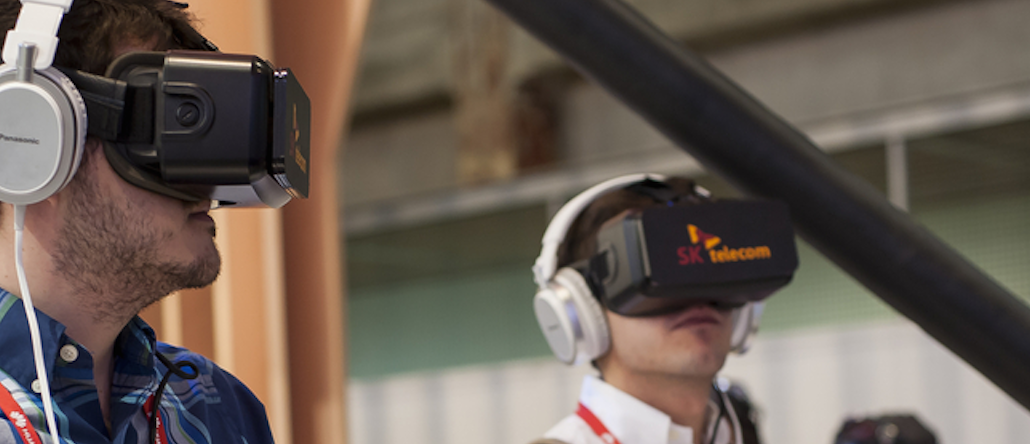
The merging of the physical and digital worlds is a key trend for retailers, and virtual reality is sitting at the center.
This 360-degree frontier, while still futuristic, could mean a lot of things for both retailers and consumers as the technology becomes incorporated both in-store and online. For now, retail’s virtual reality applications are in the prototype phase, but the many possibilities presented by technology like Facebook’s Oculus Rift are still expanding, according to Valerie Carlson, executive creative director at SapientNitro.
“The way we’re approaching brands’ problems with virtual reality is how we approach them with anything else,” said Carlson. “We ask them where they’re headed, what their goals are, and what their vision is. The thing with virtual reality is that the solutions feel limitless.”
While virtual reality headsets work their way into retail stores, here are a few ways it can help brands improve the consumer experience.
Test and learn
Before virtual reality, retailers had to bring in focus groups or take customers on “shop-alongs” to find out what was working for them while in store. With virtual reality, stores can instead host pop-ups or events with the goal of gaining valuable feedback from guests equipped with a VR headset. Every time they take a step, turn their eyes or reach for a product in virtual reality, the retailer will learn more about their real-life in-store experience; that feedback can then be adopted for a smarter omnichannel strategy.
“Connecting the dots across channels can become critical to the business,” said Carlson. “Virtual reality can make it a consistently branded experience, in-store, online and on mobile.”
Sean Cosier, head of digital innovation at Mekanism, worries that for now, it’s too soon for the average consumer to experience and provide feedback on a store in virtual reality.
“It’s hard to put on a headset and know where you’re going,” said Cosier. “The average person is more likely to be taken on a journey rather than be in control. But if [the retailer] took them through the aisles and followed their eye movement, that’s where it’s helpful.”
Currently, SapientNitro is discussing how virtual reality could help solve their clients’ retail hurdles, where they want to go with their brand and what their vision is, according to Carlson. In-store, that means getting the customer in the door and keeping them there, which virtual reality can make possible.
Product demonstrations
Virtual reality can also help the customer make the best-educated decision when shopping in-store by providing a contextual experience.
Amir Rubin, CEO of virtual reality tech firm Sixense, gave the example of shopping at an outdoor equipment store. VR can bring you to a tent on the side of a mountain or in the desert (depending what type of adventure you’re preparing to embark on). You can then, as you’re immersed in the virtual experience, get a sense of what you need, what you want, and how you’d use it. Then, you can purchase those products in-store and be on your way, more confident in your decision.
“It’s the best of brick-and-mortar combined with e-commerce,” said Rubin. “The accessibility and mobility of e-commerce, paired with trying and feeling the goods in a store, becomes very helpful.”
It’s helpful, as long as the use of virtual reality makes sense and isn’t used purely as a novelty toy, according to Lisa Bradner, svp and managing director at Starcom.
“The challenge is figuring out a way to make it additive and not disruptive,” said Bradner. “You want it to relate to the product you want to sell and to make someone want to buy it. Otherwise, it’s just a distraction.”
Draw-in appeal
Stores can use virtual reality to do more than improve in-store strategy and drive sales through immersion. According to Carlson, the experience itself – at least, while virtual reality is still a new commodity – can attract consumers into the store to “experience the brand.”
Sean Cosier, head of digital innovation at Mekanism, said that even if retailers using virtual reality aren’t pushing a particular sale, the appeal lies in the ability to immerse customers in that new experience.
“These virtual reality headsets aren’t something that everyone has in their house, so it’s about drawing people into the store,” said Cosier. “Virtual reality, beyond selling the product, can actually show the [behind-the-scenes] process, tell a story around the retailer’s craftsmanship and give a demonstration about the process itself before purchase.”
This could play out in real life in the form of a behind-the-scenes look at how designer collections for retailers (like the ones Target often hosts in-house) come to life, from the textile to the showroom.
That added incentive to visit the store is especially important for omnichannel retailers, according to Bradner, because once customers are there, they’re more likely to spend money.
“Multichannel retailers know that the store itself is important in closing the sale and upselling, so they have to do more to drive people into the store,” she said. “When I can do more in my loungewear at home, retailers have to figure out how to use their real estate. V-commerce connects [the consumer] to the brand and the products on an emotional level.”
More in Marketing

In Graphic Detail: Why YouTube is a genuine threat to Netflix
Digiday has charted exactly how YouTube is a real threat to Netflix, due to its dominance of watch time, user base and its ability to totally reshape viewing behaviors.

At Ebiquity, a new role signals marketing’s shift from metrics to meaning
Marketing has no shortage of data. Ebiquity is betting on judgement.

Lowe’s wants to do more with AI shopping in 2026
Mylow, a shopping assistant powered by ChatGPT that launched in March, is already driving double the conversion rate for online shoppers.





